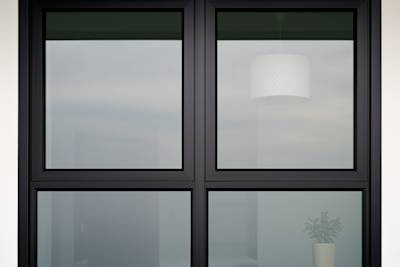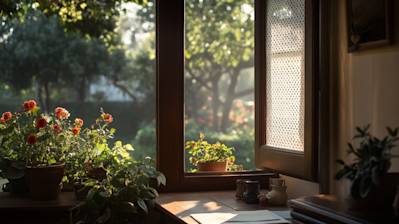Every homeowner knows that maintaining a comfortable and energy-efficient home involves many routine maintenance tasks. One such task, often overlooked, is window caulking. When the caulk around your windows starts to deteriorate, it can lead to a host of problems. By learning more about window caulking, you can prevent these issues and keep your home in top shape.
What is Window Caulking?
Caulking is a sealant that fills gaps and seals joints against leakage in various structures and piping. In the context of our homes, window caulking refers to the process of sealing the gaps around window frames—usually with a silicone or latex-based caulk—to prevent air leakage, moisture intrusion, and even bug entry.
Why Window Caulking Matters
Caulking your windows carries multiple benefits. It not only keeps your home warm during cold seasons but also helps maintain cooler temperatures during hotter periods by improving the efficiency of your HVAC system. This efficiency ultimately leads to cost savings on your energy bills. Moreover, a properly caulked window prevents moisture from seeping into your house, a scenario that could lead to mold growth and damage to your home's structure. And let's not forget that a well-caulked window keeps insects and other unwanted critters at bay.
Window Caulking Process Explained
Now, let's break down the process of window caulking into steps.
Materials Needed for Window Caulking
- Caulking gun
- Tube of caulk (silicone or latex)
- Utility knife
- Cleaning cloths
- Bucket of soapy water or rubbing alcohol
- Rags
Step-by-Step Window Caulking Guide
Step 1: Inspecting Windows
The first step is to inspect your windows. If old caulk is peeling or missing, it's a sure sign that you need to undertake the caulking process. It's also important to check whether there are any gaps or cracks in your window frames as these too would need to be sealed.
Step 2: Cleaning the Window Frames
Before starting the caulking work, ensure that the window frame is clean. You can do this by using a utility knife to scrape off any old caulk residues. Then, use a cloth and soapy water or rubbing alcohol to thoroughly clean the areas to be caulked.
Step 3: Applying the Caulk
Once your window frames are clean and dry, you can start applying the new caulk. Load your caulk tube into the caulking gun, and apply a continuous bead of caulk along the seams of the window frame. The goal is to have a smooth and even finish.
Step 4: Smoothing the Caulk
After the application, use your finger or a caulk-smoothing tool to even out the caulk. This action ensures that the sealant fills all gaps and yields a neat appearance.
Maintenance and Re-caulking
Oftentimes, the caulk around your window might show signs of wear as it ages. Some signals include caulk cracking, dislodging or the appearance of gaps. In such cases, it’s advisable to undertake a re-caulking process. The frequency will depend on the type of caulk used and the local weather conditions, but generally, aim to inspect your caulking at least once a year.
Professional Window Caulking Companies
While caulking your windows can be a do-it-yourself project, you might find it beneficial to engage a professional. Professional window caulking companies bring expertise and knowledge that ensures a thoroughly sealed and finished job. They understand the right caulk types to use based on your window frames’ material and the local climate, ensuring long-lasting results.
Final Considerations and Cost
The cost of caulking your windows can vary, depending on several factors - the type of caulk you use, the window sizes and whether you choose to DIY or hire professionals. Regardless, investing in window caulking is a cost-effective solution to boost your home's energy efficiency, comfort, and durability. A comprehensive understanding of window caulking can help homeowners keep their houses comfortable, durable and energy-efficient. Whether you choose to DIY or hire professionals, the end goal remains the same: a well-sealed, cozy home.
Frequently Asked Questions About Window Caulking
Why is caulking around windows important?
Caulking around windows is crucial as it serves as a sealant against water and air infiltration. It helps to keep your home warm during the winter, cool during the summer, and prevents rainwater from seeping into your house and causing damage. Proper window caulking contributes to energy efficiency, reducing your heating and cooling bills.
What type of caulk is best for windows?
When it comes to window caulking, silicone-based caulks are generally considered the best. They are flexible, durable, and resist shrinking over time. Moreover, they can withstand various weather conditions and exhibit excellent adhesion to different materials, including glass, aluminum, and vinyl.
How often should window caulking be replaced?
The durability of window caulking will depend on the quality of the caulk used and the environmental conditions. On average, it's recommended to check and perhaps replace your window caulking every five years. However, if you notice drafts, rising energy bills, or water seepage, it might be time to replace sooner.
How much does it cost to caulk windows?
The cost to caulk windows can vary widely based on factors such as the number of windows, the condition of the existing caulking, and the professional fees if you hire a service. On average, the material costs for a DIY project might range between $5 to $10 per tube of caulk. Professional services might charge per window, often around $25 to $50.
Can I caulk windows myself?
Yes, window caulking is a feasible do-it-yourself project if you're generally handy. You will need a caulk gun, caulk, and some tools for removing old caulk if necessary. There are plenty of online resources and tutorials available to guide you through the process.
What is the process of caulking a window?
The process of caulking a window involves several steps. First off, you need to clean and prep the area, which includes removing any old caulking. Then, you apply the new caulk using a caulk gun, guiding it smoothly along the seams. It's important to apply it evenly to ensure proper sealing.
How long should window caulk dry before rain?
Generally, caulk takes about 24 hours to dry completely. However, if the forecast predicts rain shortly after you plan to work on your windows, it would be best to wait. Even though some caulks are labeled as "rain-ready", they still need a few hours of dry conditions to properly set.
What is the best temperature for caulking windows?
Most types of caulk perform best when applied in mild temperatures, typically between 40°F and 80°F. Extremely cold or hot temperatures can cause the caulk to not adhere properly or to crack once applied. Therefore, early fall or late spring are often the best times to tackle a window caulking project.
Should windows be caulked both inside and outside?
Both inside and outside caulking are important to ensure a fully sealed window. Inside caulking helps with temperature and humidity control, helping to maintain the energy efficiency of your home. Outside caulking helps to prevent outside weather, such as rain and storms, from coming inside.
Is there a difference between window caulking and weatherstripping?
Yes, there is a difference. While both are used to insulate windows, they serve different purposes. Window caulking is used to seal stationary cracks, gaps, or joints around window frames, while weatherstripping is applied to movable parts of the window, such as the sash, to seal gaps when the window is closed.
Pros and Cons of Window Caulking
Pros of Window Caulking
Energy Efficiency
One of the most powerful advantages of window caulking is the improved energy efficiency it brings. Properly caulked windows reduce heat loss in the winter and prevent hot air intrusion during summer, thus saving on energy bills.
- Cost-saving: Reduction in energy consumption directly translates to substantial savings on utility bills.
- Comfort: Caulking windows can help maintain consistent temperature inside the home.
Durability and Longevity of Windows
Beyond energy efficiency, window caulking can also significantly enhance the longevity and durability of your windows. By preventing water seepage, it safeguards the window frames from rotting, warping, or developing mold issues.
- Preservation: Window caulking can stop moisture from penetrating, which can prolong the life of window frames and glass.
- Maintenance: Window caulking reduces the need for constant repairs and maintenance.
Prevents Pest Intrusion
Window caulking can serve as a shield against pests. It blocks the tiny gaps where insects and small pests might enter your home.
- Pest control: It can effectively deter not only insects but also small rodents from entering.
- Sanitation: By preventing pest intrusion, window caulking promotes a cleaner and healthier home environment.
Cons of Window Caulking
Application Difficulty
One common downside of window caulking is its tricky application process. Any errors made during application can negatively impact the overall effectiveness and aesthetic of the window caulking.
- Skill required: Window caulking, if not done correctly, can create an unattractive and uneven appearance.
- Time-consuming: The process of caulking windows, especially large numbers, can be considerably time-consuming.
Periodical Replacement
Another con of window caulking is the need for its periodical replacement. Most types of caulk degrade over time, requiring periodic checking and reapplication.
- Lifespan: While some types of caulk can last for several years, others need replacing every year.
- Maintenance: Window caulking, though reducing maintenance requirements in some aspects, introduces its own share of maintenance tasks.
Potential for Damaged Window Frames
If not applied and maintained correctly, window caulking may cause damage to window frames. Over time, untreated or partially treated leaks can cause significant damage, including rot and mold.
- Damage: Excessive moisture trapped due to incorrect window caulking can lead to wooden frames rotting.
- Health issues: Mismanaged window caulking can potentially lead to mold growth, which poses health risks.
Improper Sealing
At times, window caulking might not provide a perfect seal, hence leading to unwanted air leakages and decreased energy efficiency.
- Reduced Performance: Any minor errors in window caulking can significantly decrease its effectiveness.
- Energy Loss: Incorrectly applied window caulking can lead to unwanted energy loss, which negates its purpose.
Summary
Window caulking is a crucial process for ensuring the longevity and functionality of your windows. It serves as a great ally in reducing energy costs by providing a reliable and effective barrier against heat loss. Not only that, it's the first line of defense against water leaks and drafts that could cause mold or rot around your window frame. So, give your windows the attention they deserve, add window caulking to your regular home maintenance routine.
Beyond its practical aspects, window caulking also elevates the aesthetics of your home. It removes unpleasant gaps and cracks around windows while reinforcing their structure. As an uncomplicated and affordable DIY task, it's an investment that can drastically improve your home's look and feel. Remember, quality, durability, and a fresh appearance for your windows is just a caulk away.
Indeed, the benefits of window caulking are far-reaching. It ensures optimal energy efficiency, defends against weather damages, and lets you enjoy a more comfortable home. Window caulking may seem like a minor detail, but the paybacks are enormous. So, don’t skimp out on this indispensable task – it's a small step that goes a long way!
About US Quality Construction of Columbus
Welcome to US Quality Construction of Columbus, based in Columbus, OH! As a locally owned company, we take pride in being one of the leading providers of premium construction services across our great city. We have been serving this community for multiple years, delivering top-notch workmanship on all of our projects. From residential remodels to large-scale commercial projects, our team of committed professionals is dedicated to ensuring all of our clients’ needs are not just met, but exceeded.
Tags: window caulking, energy efficiency, home improvement,








